|
|
 
|
Links to Liberia
Gateway
S
|
Liberian Internet Pages
Click and Go
|
SPECIFICATIONS
|
|
Next Link Page
|
Links in Alphabetic order
[A]
[B]
[C]
[D]
[E]
[F]
[G]
[H]
[I]
[J]
[K]
[L]
[M]
[N]
[O]
[P]
[Q]
[R]
[S]
[T]
[U]
[V]
[W]
[X]
[Y]
[Z]
|
|
Sahara Village

|
SaharaVillage.com was launched on 30 April 2002 to facilitate the exchange of information
and serve as a news and activity bulletin for the greater African community
and the Liberian community in particular.
|
|
Sande Society

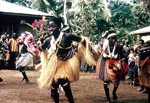
Copyright © Board of Regents of the University of Wisconsin System

|
There are many secret societies in Africa. Some are headed by women, some by men. Sometimes the societies themselves
are secret, i.e., no one other than the members know who belongs to the societies. In other cases, members are
known to non-members, but the society has information and rituals that are known only to society members.
The Sande Society is responsible for teaching young women the skills and knowledge they will need as adults.
The society operates the schools that initiate young women into adulthood. Initiation schools may last for anywhere
from six months to three years, depending on the country and ethnic group. The society is also responsible for
enforcing the laws that are passed down from the female ancestors. Even the chief must obey the laws of the Sande Society.
There is much misinformation printed about the society, largely because Europeans interpret the society from an
outsider's viewpoint. Thus, many mistaken notions are now part of the literature written about the society.
The Sande Society is found throughout Sierra Leone and Liberia. It is found among many people, including the Mende,
Sherbro, Temne, Dei, Vai, Kpelle, Gola, Kono, Limba, Bassa, and Homwe.
The helmet-type masks left, fit over the head of the dancer, rather than fitting only over the face.
The masks are the property of the initiates themselves, and are worn at Society functions, at a parade marking
the end of initiation, and at public festivals. At many public festivals the society holds a series of challenge
dances at which each dancer attempts to out-do the others.
All of the masks are carved by professional carvers who are men, even though only women are permitted to own the masks.
The design for the masks must fit into prescribed stylistic parameters, or they cannot be used for Sande Society
functions. In some cases, the particular details of a mask come to a relative of the initiate in a dream.
The dream is then related to the carver, who translates the information into the stylistic elements of the mask.
The masks are generally dyed a dark brown or black. On rare occasions also seen white-faced masks.
Holes are drilled around the bottom of the mask, through which are attached strands of raffia that are usually
dyed black. The dancer's costume consists of a dark blue or black "dress-like" garment to which dyed raffia is attached.
The dancer wears dark gloves and stockings, as well as trousers. No one recognizes the dancer because she is covered
from head to foot.
The masks are carved from a wood very similar to balsa; this is done to keep the mask as light-weight as possible.
The weight of the mask is one of the characteristics used to determine how beautiful the mask is.
Very heavy masks are most likely not carved for use by dancers.
All the masks, regardless of the people who produce them, share some similarities. They are usually black or brown.
They are helmet masks that fit over the entire head of the dancer. They are very wide at the bottom, where there
are rolls that circle the bottom of the mask. While it is true that women who are fatter are considered more beautiful,
for a variety of reasons, there is no evidence that women are expected to be as large as the neck rolls on the mask would suggest. Some authors say that the rolls on the neck represent fat; others indicate that they depict concentric ripples of water that take place when the Sande spirit, which is a water spirit, emerges from the lake or river. There may be some measure of truth to each of these theories, but the most often overlooked reason for the large neck, which is larger in circumference than the rest of the mask, is a matter of stylistic necessity. The neck must be large in order to allow the mask to fit over the dancer's head. The rolls also reflect the belief that women who have lines in their necks are more beautiful. It is believed that everyone has a neck to keep her head off her shoulders, but if God took the time to etch lines on your neck, you must be a special person. Often, young women tie strings around their necks before they go to sleep, knowing that when they awake, they will have beautiful necks.
The variety of the mask is almost unlimited, even though they must fit established stylistic norms. There are many
hairstyles depicted on the masks, as varied as the styles women in Sierra Leone and Liberia wear. Special
"medicine" pouches, animal horns, and other materials may be added to the mask in order to provide extra power
for higher ranking officials of the society. Tin, silver, and even hammered gold decorations can be found on masks
belonging to the highest ranking officials.
The superstructure of the mask is as important as the face and other parts of the mask. Again, the forms
used on the superstructure, or top, of the masks are almost endless. I have seen European crowns, pith helmets,
cooking pots, beds, gold weights, birds, snakes, European religious and royal figures, horns, and other items
carved into the surface of these masks. One theme that is very common on the superstructure, but is hardly ever
mentioned, is sexuality. Many of the forms are stylized female labia. Images suggesting the male penis also appear often.
It should be noted that there are many societies in Africa that use masking traditions. However, of all the societies
that, the Sande Society is the only in which women are masked dancers.
The masks themselves are called Bundu or Sowei. While enrolled in the Sande school, the young initiates
learn many secrets, among which is the art of using herbs, spices, and roots to make poisons, love potions,
and impotency powders. Revealing any of the society's secrets to men or non-initiates would result in sanctions
ranging from banishment to death. During their training, the young initiates "die" ritually and are reborn as
new human beings. When the initiates return to their homes, they have new Sande names. It is also during this
training that the young initiates undergo the highly controversial operation, the clitorectomy. Membership in the
Sande society is highly sought because few opportunities exist for women who have not been initiated into the
Sande Society.
|
|
Wilton G. S. Sankawulo
|
Chairmen of the Council of State:
September 1, 1995 September 3, 1996
Wilton G. S. Sankawulo was the leader of Liberia from 1 September 1995 until 3 September 1996 as chairman of the
Council of State, which governed Liberia following the overthrow and murder of former dictator Samuel K. Doe,
and the end of the presidency of Amos Sawyer. The council of state consisted of a civilian chair, as well as
members: Charles Taylor, United Liberation Movement of Liberia for Democracy-K leader Alhaji Kromah, Liberia
Peace Council leader George Boley, and two other civilians.
(From Wikipedia, the free encyclopedia)
|
|
SANNIQUELLIE
|
Sanniquellie is a town in northern Liberia. It is known as the place where William Tubman, Sekou Touré and
Kwame Nkrumah began the discussions which led to the formation of the Organisation of African Unity [NOW AFRICAN UNION].
|
|
Henri Sar
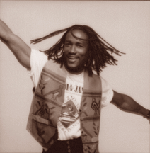
|
Hampton Roads Central Library:
Henry's love of song, dance, and acrobatics started in Liberia, West Africa. By the age of twelve he was already dancing in cultural troops throughtout Liberia. At seventeen Henry became the lead vocalist in the African reggae band "Music Messiah". He moved to the U.S. to further his musical career in 1986 where he became the lead vocalist with the "Rhythmex", a reggae, African music group. He was lead singer for the traditional group, "Cross Culture"; a caribbean-soca band, "Caribash", and performed as vocalist for the contemporary rock and reggae group, "Six".
|
|
Amos Sawyer
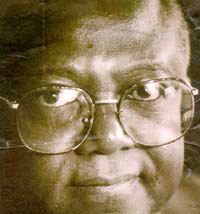
|
Dr. Amos Sawyer (born 1945) was the President of the Interim Government of National Unity in Liberia
(November 22, 1990–March 7, 1994) in the period after the abduction (and eventual murder) of president
Samuel Doe, from 9 September 1990 until 22 November 1990.
In late August in an emergency conference in Guinea, Sawyer was voted interim president and Bishop
Roland Diggs was voted vice-president. His one-year appointment was extended for four years
during the civil war and fought against rebels led largely by Taylor, Johnson, and David Nimley.
In 1994, he was
forced to step down as a part of the peace process.
Dr. Sawyer holds a Ph.D. in political science from Northwestern University. He is currently Associate Director
and Reseach Scholar, Workshop in Political Theory and Policy Analysis in the Department of Political
Science at Indiana University in Bloomington, Indiana, USA. His book, Beyond Plunder: Toward Democratic
Governance in Liberia, was slated for publication in spring of 2005.
|
|
Sea Breeze

|
Sea Breeze Journal of Contemporary Liberian Writings is a quarterly electronic journal devoted to
publishing creative nonfiction and original short fiction narratives, poetry, interviews, book reviews,
and social and political commentary arising out of Liberian life by Liberian writers wherever we are.
Sea Breeze Journal is a small operation established in 2004, committed to the idea of inspired renewal,
even as the sea herself seeks continual, creative regeneration.
|
|
HARRY VARNEY GBOTO-NAMBI SHERMAN

|
Running cadidate for COTOL - Coalition for Transformation of Liberia at the 2005 Presidential Elections.
|
|
Reginald A. Sherman
|
Chief Executive Committee: October 28, 1871 - November 4, 1871
(From Wikipedia, the free encyclopedia)
|
|
Rudolph Sherman
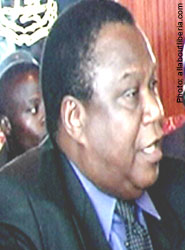
|
Politician: Leader of the True Whig Party
|
|
Bodioh Siapoe
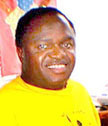
|
Politician/journalist?
|
|
SINOU COUNTY
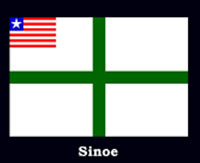
|
Sinoe is one of Liberia's 15 counties. Greenville is the county's capital.
|
|
Sinou Times

|
The stories, opinions, commentaries, and articles, do not necessarily represent the views of the publisher,
and Sinoe Times.
|
James Skivring Smith
PRESIDENT

(+)
|
James Skivring Smith was Vice President when he replaced President Roye for the remainder of
his term. From 1871-72, James Skivring Smith was the interim president of Liberia. Smith was born in Charleston,
South Carolina and he arrived in Liberia in 1833. He was Secretary of State of Liberia, from 1856-1860, senator,
Grand Bassa County, 1868-1869 and superintendent of Grand Bassa County, 1874-1884.
|
SMA
Society of African Missions
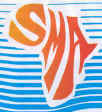
|
View a unique collection of Liberian stamps at the Society's site. It is now 95 years since the SMA started
in Liberia and 53 years since the American Province entered the fray. Success always seemed elusive, if not
at times downright unattainable. The story of the Liberian mission is full of ups and downs, lights and shadows.
|
|
SOS Children's Villages

|
SOS Children's Villages offer abandoned, orphaned and destitute children - regardless of race, nationality or creed - a new and permanent home, and prepare them for an independent life. SOS-Kinderdorf International is the umbrella organisation to which all national SOS Children's Village Associations are affiliated.
|
|
Special Court Sierra Leone

|
The Special Court for Sierra Leone was set up jointly by the Government of Sierra Leone and the United Nations.
It is mandated to try those who bear the greatest responsibility for serious violations of international
humanitarian law and Sierra Leonean law committed in the territory of Sierra Leone since 30 November 1996.
|
|
James Spriggs-Payne
PRESIDENT

(1819-1878)
|
President of Liberia: January 3, 1876 - January 7, 1878 following President Warner.
James Spriggs Payne served for two years from 1868 to 1870.
He also served as president again in 1876 to 1878.
|
|
TRONT J. SUUL
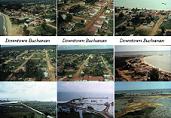
|
Home page from Trond J Suul with very nice photos from the sixties in Liberia: Buchanan - Lambco Mine - Swedish school.
As a kid Trond spent 2 years in Buchanan Liberia (1961-1963) when his father was working on a big railway project,
designed to bring huge deposits of iron ore out of Nimba mountain 300 km from the coast.
|
|
Sweet Liberia.com
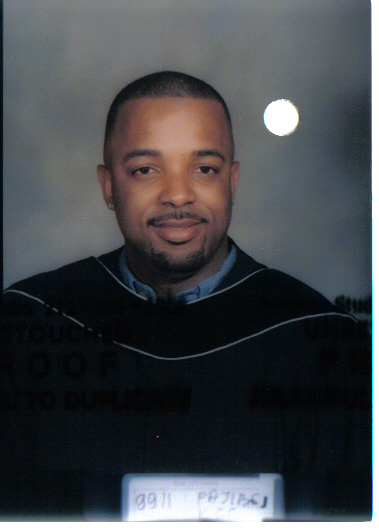
Potter Pajibo: Editor
|
Welcome to www.Sweet-Liberia.com.
This Site is still in it's developmental stages. Enjoy the available services and beaar with them as they build what promises to be the best Liberian hangout on the web.
Potter Pajibo (Editor). E-mail: editor@sweet-liberia.com
|
|
SWIHA
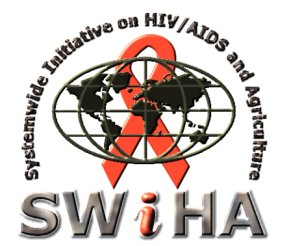
|
National governments worldwide and the international community have recognized HIV/AIDS as an issue of human development. The CGIAR System-wide Initiative on HIV/AIDS (SWiHA) joins sixteen international agricultural centers (IARC) of the CGIAR for intervention against the impact of HIV/AIDS on agriculture, agriculture productivity, food security and poverty for the benefit of communities and farm-families worldwide that are, or not afflicted by HIV/AIDS pandemic. The Initiative pulls existing synergy, avoids duplication and forge efficient use of human, material, financial and knowledge-based resources in the global fight against HIV/AIDS.
|
|
Next Link Page
|
Links in Alphabetic order
[A]
[B]
[C]
[D]
[E]
[F]
[G]
[H]
[I]
[J]
[K]
[L]
[M]
[N]
[O]
[P]
[Q]
[R]
[S]
[T]
[U]
[V]
[W]
[X]
[Y]
[Z]
|
|
To have your URL also added to these Liberian Internet gateways, please first forward an e-mail request to the LinkMaster at:
|
LinkMaster
All rights reserved!
|
|
|---|